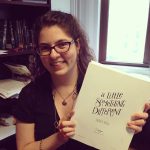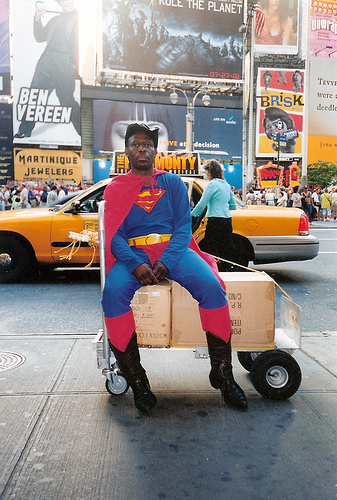World-Building through Your Characters’ Eyes
Today’s guest post is by Holly West.
World-building is a writing term most often heard in discussions of fantasy and sci-fi novels—genres that require writers are create complex realms, often with rules different from our own. But in fact, all books need a certain amount of world-building, even if it’s just conveying the layout of a school, the interior of a restaurant, or the clues of a murder scene.
And it can be tricky to figure out how much world-building you need to include, especially in those oh-so-important opening pages.
There’s so much that needs to be accomplished there. Writers have to grab the reader’s attention, introduce the character, set the stage, and jump into the action . . . and they have to do all of these things very quickly. It’s a tough challenge.
But, it’s doable.
Build Your World through Your Characters’ Eyes
The trick of it is to combine some of these things. Use your world-building to help you introduce your character and kickstart the action. Show us the world through your character’s eyes. The details that they focus on and how they describe them can tell us a lot about who your character is.
Someone who is very into fashion might note interesting outfits (or horrible faux paus), while a foodie might go more in depth about what they are eating or pay special attention to any restaurants they pass.
A character who tends to follow the rules is more likely to take note of a warning sign, while a more impetuous character might rush right past. Does he notice tiny details (useful for Sherlock Holmes–type detectives), or is he the sort of person who walks right into someone because his head is in the clouds and his nose is buried in a book?
Since most people don’t really pay attention to things that are normal, pointing out the abnormal thing can really help to introduce the action early on (because plot happens when the character’s normal routine gets turned upside down. Normal is boring; plot comes from change).
Normal Is Boring
Think about your morning commute. What details do you actually remember noticing? I know that I very rarely think about the weather unless it somehow affects me: if it’s raining and I have to dig out my umbrella, or the sun is glaring in my eyes, or I didn’t wear the right outfit and I’m too hot or too cold. Otherwise, it’s not really worth noting.
I also don’t pay attention to all the buildings that I pass every day, but if there’s a new store, or I have to reroute because of construction, or I have to interact with other people for some reason, then that makes an impression. So, introducing your setting by having your character give a detail-filled account of their normal morning commute can feel unnatural.
But if your character is exploring a new place, or trying to follow a vague and contradictory set of directions, or is casing the building for a later heist, then you might be in a situation where it would make sense to include a lot of details about the setting—and a scenario like that also starts your reader off in a situation that is primed for action.
The character exploring a new place might find evidence of a crime; the character following bad directions has a 90 percent chance of walking into the wrong building; and the thief casing a building might draw the attention of the security guard, which is obviously going to cause a lot of problems later on.
Looking at the world through your characters’ eyes is an easy way to decide how much detail you need in any given scene. It’s all a matter of perspective.
 Holly West is an editor at Feiwel & Friends and Swoon Reads. She helped to launch Macmillan’s YA imprint Swoon Reads in 2013, and now works with authors like Mo O’Hara, Meg Cabot, and Danika Stone. Follow Holly on Twitter for more!
Holly West is an editor at Feiwel & Friends and Swoon Reads. She helped to launch Macmillan’s YA imprint Swoon Reads in 2013, and now works with authors like Mo O’Hara, Meg Cabot, and Danika Stone. Follow Holly on Twitter for more!











